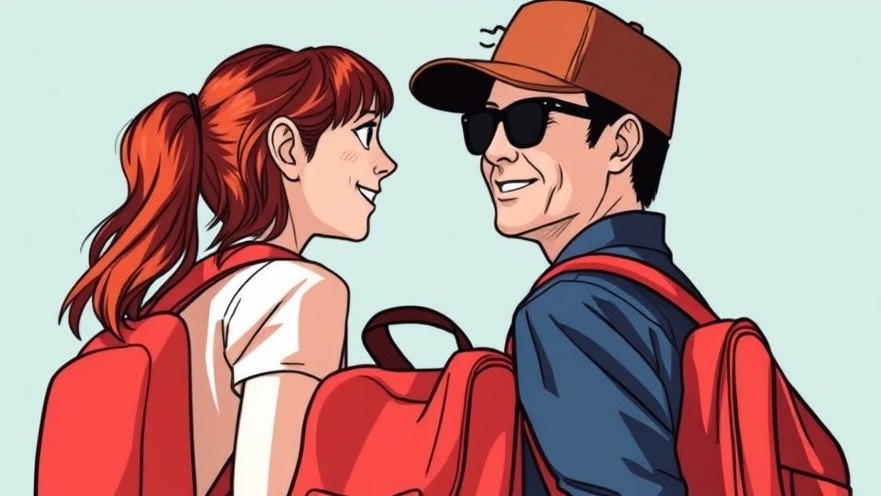
From Red Backpacks to Billion-Dollar Belief
When Sara Blakely first cut the feet off a pair of control-top pantyhose, she wasn’t chasing a business dream — she just wanted her white pants to look smooth without panty lines.
At the time, she was 27 years old, selling fax machines door-to-door in Florida, getting business cards ripped up in her face, and wondering how life had veered so far off course.
“I pulled over on the side of the road one day and said, ‘I’m in the wrong movie. Call the director. This is not my life,’” she recalls.
That moment of frustration became the starting point for one of the most inspiring entrepreneurial journeys in fashion history.
With just $5,000 in savings, no background in retail, and zero experience in product design, Sara set out to solve a problem she deeply understood.
What followed was a whirlwind of homemade prototypes, bathroom demos for buyers, and a cold call to Neiman Marcus that would ultimately land Spanx on Oprah’s radar — and in the closets of millions of women.
But the real story isn’t just about shapewear.
It’s about grit. It’s about reframing failure. It’s about learning to laugh at yourself (even when you tell the entire UK you're going to “smooth their fannies”). And it's about what happens when you refuse to let embarrassment, inexperience, or the fear of rejection stop you from chasing the idea that won’t let you go.
The Girl with the Red Backpack
Sara wasn’t working in fashion. She hadn’t taken a single business class.
She was selling fax machines door-to-door — walking into offices cold, hearing “no” all day, and getting rejected again and again.
One day, after a particularly brutal round of rejections, she pulled over on the side of the road and declared, “This is not my movie.”
That night, she wrote in her journal:
“I want to invent a product that I can sell to millions of people that will make them feel good.”
She didn’t know what the product would be. But she believed she would recognize it when it came.
Two years later, she did.

From Pantyhose to Power Play
Like many women, Sara struggled with visible panty lines and awkward undergarments that ruined her outfits.
So, before a party, she cut the feet off a pair of control-top pantyhose and wore them under her white pants. They gave her a smooth, polished look — no lines, no lumps, no show-through.
Because she had asked so clearly for an idea, she immediately knew this was it.
“I had asked the universe for a product that would help women feel good,” she said. “And when I put on those cut-up pantyhose, I felt amazing. I knew.”
That simple hack turned into a billion-dollar idea.
Cold Calls, Bathroom Demos, and a Big Break
With her $5,000 in savings, Sara got to work.
She studied patents at Barnes & Noble and wrote her own. She called dozens of hosiery mills — most said no. Finally, one factory owner agreed after his daughters insisted.
She named the product Spanx, believing that made-up names were easier to trademark and remember.
She put her face on the packaging to save on modeling costs. She did her own PR and shipped products from her apartment.
Her first big retail break came when she cold-called Neiman Marcus.
“I told the buyer I had invented something that would change how women wore clothes. I asked for 10 minutes of her time and told her I’d fly to Dallas to show her.”
When she arrived, the buyer wasn’t convinced. So Sara asked if they could go to the bathroom — where she changed into Spanx and showed the difference in real time.
That one bathroom demo led to her first big order.
Soon after, Oprah featured Spanx as one of her “Favorite Things,” and everything changed.

International Expansion — and a Hilarious Misstep
Trying to expand into the UK, Sara landed a live interview on the BBC.
When asked what Spanx did for women, she enthusiastically responded,
“It lifts your fanny!”
What she didn’t know was that in the UK, “fanny” doesn’t mean “rear end.” It means something else entirely.
“I basically told the entire UK that I was smoothing their vaginas,” she laughed. “Our international launch was off to a great start!”
It was a mortifying moment — but one she now shares as a powerful lesson in vulnerability, humor, and resilience.
The Power of Mindset and Reframing Failure
Sara credits much of her success to mindset — especially the way her father redefined failure in her childhood.
Every week at dinner, he would ask, “What did you fail at this week?” If she didn’t have an answer, he was disappointed.
“Failure became not trying,” she said. “As long as I tried, I was succeeding.”
That mindset helped her push past self-doubt, rejection, and embarrassment — even intentionally seeking out moments that made her uncomfortable.
“I’ll randomly sing in elevators just to practice getting over the fear of what people think,” she explained. “Embarrassment loses its power when you chase it on purpose.”
What Makes Sara — and Spanx — Different
From the very beginning, Spanx wasn’t just a product. It was a mission.
Sara did everything herself for the first year. She didn’t seek investors. She didn’t outsource the tough parts.
She used humor in marketing, put her own face on the packaging, and told her story everywhere she could.
Even her brand name stood out. “Spanx” was snappy, slightly edgy, and made people smile.
What really set her apart was her willingness to be real. Whether pitching buyers or sharing awkward moments on stage, she led with heart and humanity.
“I didn’t have the most experience,” she said. “But I cared the most.”

Advice for Aspiring Entrepreneurs
Sara’s journey holds countless lessons for anyone with a dream:
Start with your own problem. If something bugs you, chances are it bugs others too.
Set a clear intention. Write it down. Ask for it.
Don’t wait for expertise. Learn as you go.
Talk to people in their language. Learn to sell to different personality types.
Laugh at yourself. Vulnerability builds connection.
Use what you have. Whether it’s a red backpack or $5,000 in savings — start where you are.
A Legacy of Confidence and Generosity
When Sara sold a majority stake in Spanx to Blackstone in 2021, the company was valued at $1.2 billion.
To celebrate, she gave each of her employees two first-class plane tickets to anywhere in the world — and $10,000 to spend on the trip.
She’s also donated millions through her foundation to support women in business, the arts, and education — including $5 million in COVID relief to female entrepreneurs.
Rewrite Your Movie, One Bold Move at a Time
Sara Blakely didn’t change the fashion industry by following the rules. She changed it by following her gut.
She cut up her pantyhose. She cold-called buyers. She asked big questions and believed in her own weird, wonderful answers.
She reminds us that it’s okay not to have a perfect plan.
That you can build something huge without credentials, experience, or connections.
And that sometimes, the most life-changing thing you can do is simply try.
“Don’t be intimidated by what you don’t know,” she says. “That can be your greatest strength and ensure that you do things differently.”
You might feel like you're in the wrong movie. But maybe you’re just one bold, messy, beautiful scene away from writing the one you were always meant to star in.
 Add Row
Add Row  Add
Add 




Write A Comment